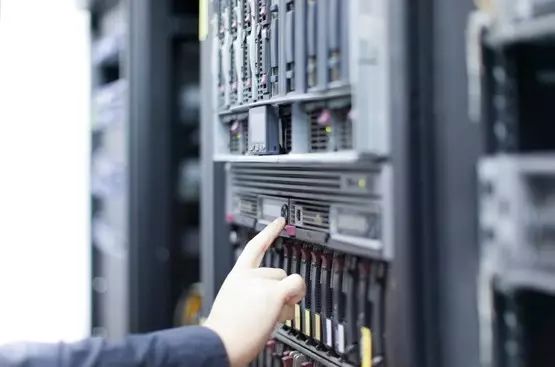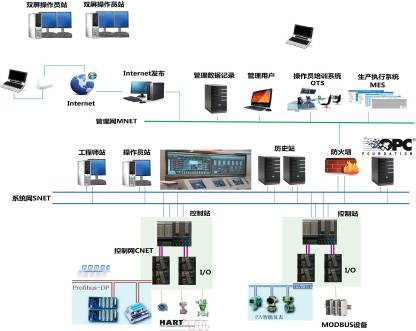Decentralized control system DCS selection requirements attention selection indicators, etc.
This text provides a comprehensive overview of Distributed Control Systems (DCS) from the perspective of manufacturers, focusing on the fundamental structure and related knowledge. It outlines the principles, precautions, and key selection criteria for DCS systems, emphasizing practical application and operability. In addition, it covers the historical development and current trends of DCS technology, offering valuable learning resources for engineers and technicians to understand the unique features and advantages of different systems.

1. Definition of DCS
DCS stands for Distributed Control System, also known as a distributed control system in Chinese. It is a multi-level computer system composed of a process control level and a process monitoring level, integrated with communication networks and technologies such as computers, communication, display (CRT), and control. The core concept is decentralized control, centralized operation, hierarchical management, flexible configuration, and convenient setup.
The first DCS system was introduced by Yokogawa Corporation in 1975 and tested at an industrial site. China's DCS development began later, with HOLLYSYS introducing the first domestic DCS system, HS1000, in 1993.
2. Main Structure and Features of DCS
The system consists of field control stations, data communication systems, man-machine interface units (operator stations, engineer stations), cabinets, power supplies, etc. It has an open architecture with multiple data interfaces. The hardware is reliable, easy to maintain, and suitable for harsh industrial environments. The software platform supports complex control systems and advanced algorithms, making configuration simple and user-friendly. It supports various fieldbus standards for future expansion.
The system is designed with redundancy and self-diagnosis at the module level, ensuring high reliability. Failures do not affect the overall system operation. Parameters, alarms, and diagnostics are centralized on CRT displays and printed. The DCS system is highly available, with a failure time of 100,000 hours, and is used in nuclear, thermal, and other critical industries.
The concept of "domain" divides large-scale systems into independent sub-systems connected via a high-speed network. Each domain is a fully functional DCS system, meeting user needs effectively. The network structure ensures reliability, openness, and advancement, using redundant Ethernet for the system and control layers, and PROFIBUS for field signals.
The system follows a standard Client/Server structure, uses a reliable operating system like Windows NT, and employs real-time embedded OS for control stations. It supports IEC61131-3 standard control configuration tools, allowing flexible and scalable solutions.
2.1 Network Architecture
The DCS network is typically divided into three parts: Management Network (MNET), System Network (SNET), and Control Network (CNET). SNET and CNET are redundantly configured, while MNET is optional. SNET is a high-speed redundant industrial Ethernet, connecting engineering stations, operator stations, and field control stations. CNET uses fieldbus for real-time communication with field devices.

Figure 4-1-1: Typical network architecture diagram of DCS
2.2 System Components
The system includes engineering stations, operator stations, historical stations, control stations, and I/O modules. Engineering stations handle configuration, modification, and download. Operator stations monitor and manage production sites. Historical stations store and exchange data with factory management systems. Control stations perform signal acquisition and control, while I/O modules convert and diagnose signals.
3. Key Considerations for DCS Selection
3.1 Overall Design
DCS design emphasizes high reliability and availability, with all core components supporting redundancy. Hardware can be centralized or modular. Centralized boards offer more channels but less flexibility, while modular designs are more flexible and compact. Modern systems favor modular structures due to miniaturization and intelligence. Peer-to-peer and Client/Server architectures are both used, with hybrid models becoming common for large-scale applications.
3.2 Hardware Selection
Controllers should have fast response times, module capabilities, and expansion potential. Response time includes sampling and calculation periods, with typical values ranging from 100ms to 2000ms. Controller performance depends on CPU speed and architecture, with PowerPC and ARM being popular choices. Redundant controllers ensure seamless switching, with bumpless output being crucial for uninterrupted control.
Communication networks use redundant Ethernet for controller-HMI links and custom buses for field I/O. Power supply design must meet stability requirements, with isolation between analog and digital sections. I/O modules should be reliable, support international standards, and include redundancy and diagnostic functions.
3.3 Software Selection
Configuration software allows offline and online system setup, supporting IEC61131-3 standards. Online software provides real-time monitoring, alarm handling, and reporting. Controller software manages signal acquisition and control, while auxiliary tools help with system maintenance and upgrades.
4. Historical Development and Trends
Since the 1970s, DCS has evolved significantly, driven by IT advancements. Early systems were limited, but modern DCS offers advanced control, integration, and scalability. Companies like Honeywell, Yokogawa, Emerson, and Hollysys have led the way, with each offering unique strengths. DCS now integrates with enterprise systems, supports fieldbus, and emphasizes security and information management.
Today’s DCS systems provide comprehensive control and management at the plant level, integrating information from the field to the corporate group. Security, reliability, and adaptability are key priorities, with emerging trends including cloud-based services, remote diagnostics, and industry-specific solutions. As fieldbus technology advances, the combination of traditional I/O and fieldbus will become more common, enhancing system functionality and efficiency.
phone Charging cable,Usb Phone Data Cable Android,iphone charge data cable,Phone data cable adapter
DongGuan BoFan Technology Co.,Ltd. , https://www.ufriendcc.com